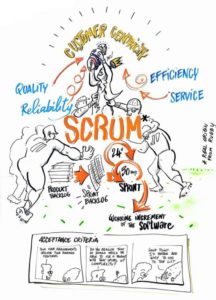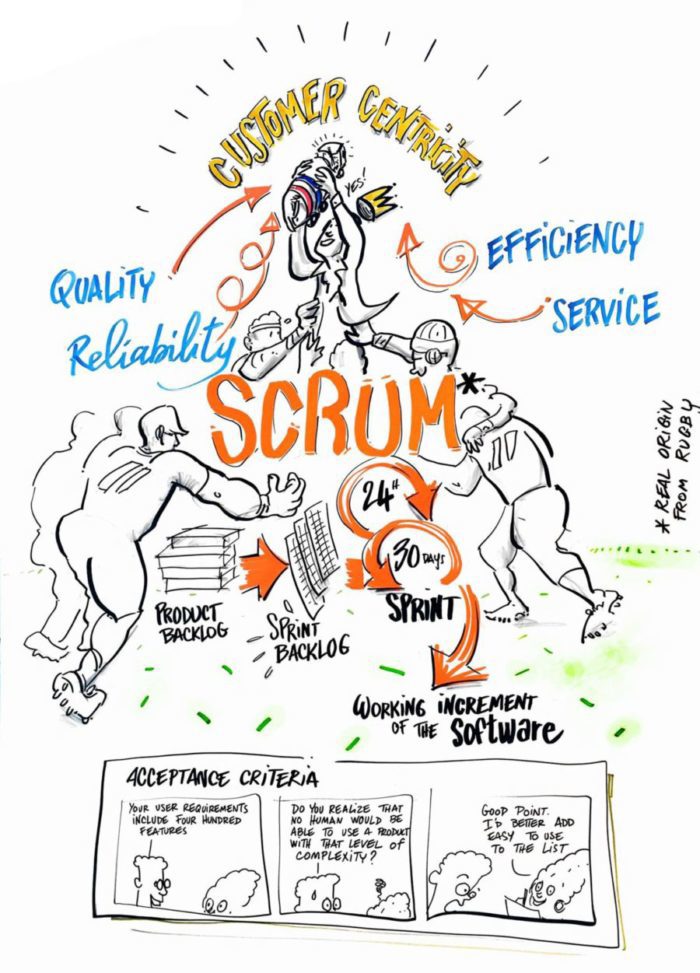Are you familiar with Rugby? You don’t have to be a player or an avid follower of the game to have seen a scrummage or a Rugby scrum. In fact, the word, ‘scrum’, is not just a Rugby term anymore. If you’ve been developing technology for the past few years, then it is possible you have worked in a ‘Scrum team’, or have even been a Scrum Master.
What has scrum in Rugby got to do with building apps; and do Rugby players make good Scrum Masters? A study published in 1986 by Hirotaka Takeuchi and Ikujiro Nonaka in Harvard Business Review, compared high-performing, cross-functional teams to the scrum formation used by Rugby teams. Just like in Rugby where a team or a unit of players packs closely together with their heads down, attempting to gain possession of the ball, Scrum is an approach that sees a project as a process – not as an individual task, but as a continuum of tasks. In a work environment that stresses creativity and original problem solving, this framework is highly beneficial. It was further picked up by other project managers, particularly Ken Schwaber and Jeff Sutherland, who standardized its practices and ways in the 1990s.
Why is Scrum So Unique?
As one of the most popular frameworks for implementing Agile, Scrum is distinct because of the pledge to short iterations of work called, “sprints” and the teams’ self-organizing method of working.
Many organizations have reported that by implementing the Scrum framework, they’ve experienced higher productivity, better quality of work, increased customer satisfaction and an overall happier team.

We have recently been working with Kurt Nielsen and Christian Myrstad, at Agile Lean House, discussing with them the ultimate challenge of how to scale Scrum. We asked ourselves how companies can undertake large-scale software developments, with multiple Scrum teams, and thus, many Scrum Masters – which brings us back to the original question, “Do rugby players make good Scrum masters?”
Rugby and Scrum Masters: Their Connection
We asked our friends at Agile Lean House what they think, and they confirm our belief that “Rugby players would [indeed] be good candidates.” They recognize Rugby players’ “appreciation of a team” and thus the fact that “no single expert can span the whole gamut of necessary insight and skills…[especially] when scaling to multiple Teams [of Scrum].” Kurt Nielsen also emphasizes that “those who are Scrum Masters in a scaled environment will have to take care not only of their Team and Product Owners, but also be prepared to participate in a circle of Scrum Masters, coordinating the attack on impediments or improvements to the process across Teams.” So just as the Number 8 in Rugby (the orchestrator of the match), Scrum Masters must also “excel in many areas” and learn how to optimize the process in scaled Scrum environments.
From rugby teams to corporate teams, Scrum ultimately defines the spirit of working together
collectively: getting the ball from one end of the field to the other, efficiently and effectively. At Starfish Taylor, we are here to help your organization build stronger teams and prioritize your goals, so that you can achieve better results and improve as a collective.
Interested in Learning More?
For practical help in implementing Agile and scaling Scrum, get in touch with us here. To learn more about Starfish Taylor and the services we offer, click here.



